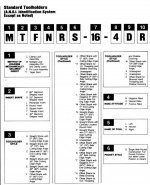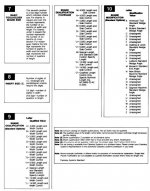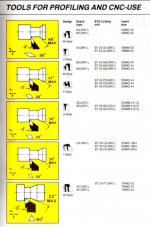Higgins909
Aluminum
- Joined
- Nov 19, 2018
I'm trying to learn how to CNC, so bear with me.
Sandvik 124b f6m (DNMG)
Iscar MVJNL 12 3B K6M (VNMG)
This is what I can make out on this tooling. I can only find specs on the Iscar so far, but I don't know if it's the info I'm looking for.
It's got a -5.5 Rake angle axial and a -10.5 rake angle radial. (Don't know what these mean) In the tool setting file it ask for nose angle and front edge angle. The nose angle looks like the angle of the insert, so we got that and am having issues figuring out "Front edge angle" which in the little diagram shows the angle in between the back side of the insert I guess you can call it, and the part. Looking at the VNMG I would think it would be a lot more then 10 deg. Currently both are set to 1.0 and do work, but wonder what this really does.
Thanks,
Higgins909
Sandvik 124b f6m (DNMG)
Iscar MVJNL 12 3B K6M (VNMG)
This is what I can make out on this tooling. I can only find specs on the Iscar so far, but I don't know if it's the info I'm looking for.
It's got a -5.5 Rake angle axial and a -10.5 rake angle radial. (Don't know what these mean) In the tool setting file it ask for nose angle and front edge angle. The nose angle looks like the angle of the insert, so we got that and am having issues figuring out "Front edge angle" which in the little diagram shows the angle in between the back side of the insert I guess you can call it, and the part. Looking at the VNMG I would think it would be a lot more then 10 deg. Currently both are set to 1.0 and do work, but wonder what this really does.
Thanks,
Higgins909




